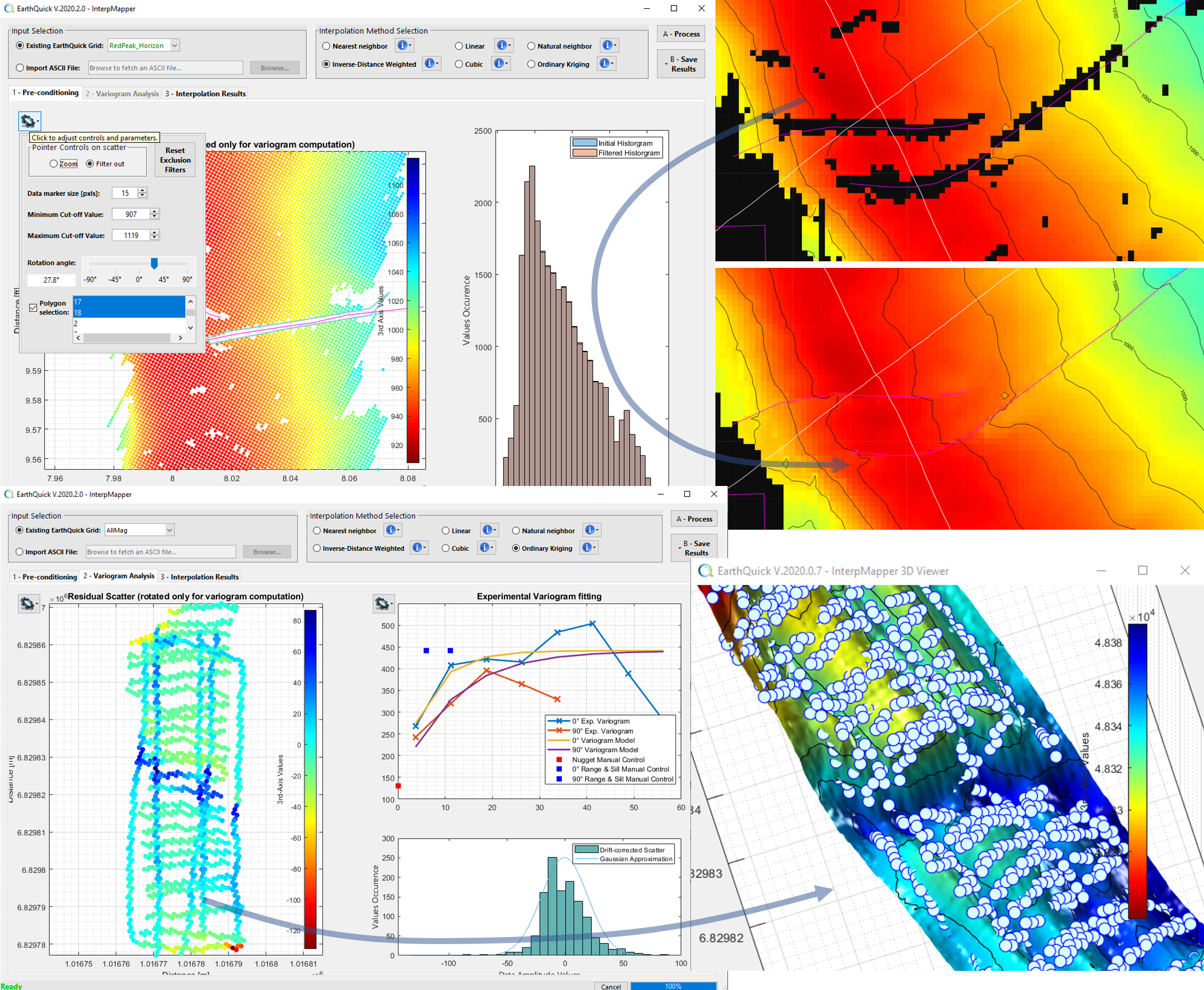InterpMapper turns scatter data to continuous 2D grids, relying on various interpolation methods (non-parametric, inverse distance weighting and ordinary kriging).
That also lets users to perform data analysis and filtering with following facilities:
- Draw exclusion polygons to evict outliers,
- Define minimum and maximum cut-offs to filter out extreme values,
- Rotate the scatter (especially designed for inverse-distance weighted interpolation to save computation power, and for ordinary kriging to enable handling of anisotropy),
- Select polygons to be used as interpolation barriers when dealing with inverse-distance weighted interpolation.
Ordinary kriging facilities allow users to:
- Compute automatically residues by giving the drift order,
- Choose kriging with external drift,
- Consider geometric anisotropy Vs isotropy with variographic analysis and fit with different kinds of variogram models,
- Consider unique Vs moving neighborhood,
- Etc.
Post processing (i.e., cropping, 2D-median filtering, ...) of interpolation results could then be easily achieved with the Global Viewer.


